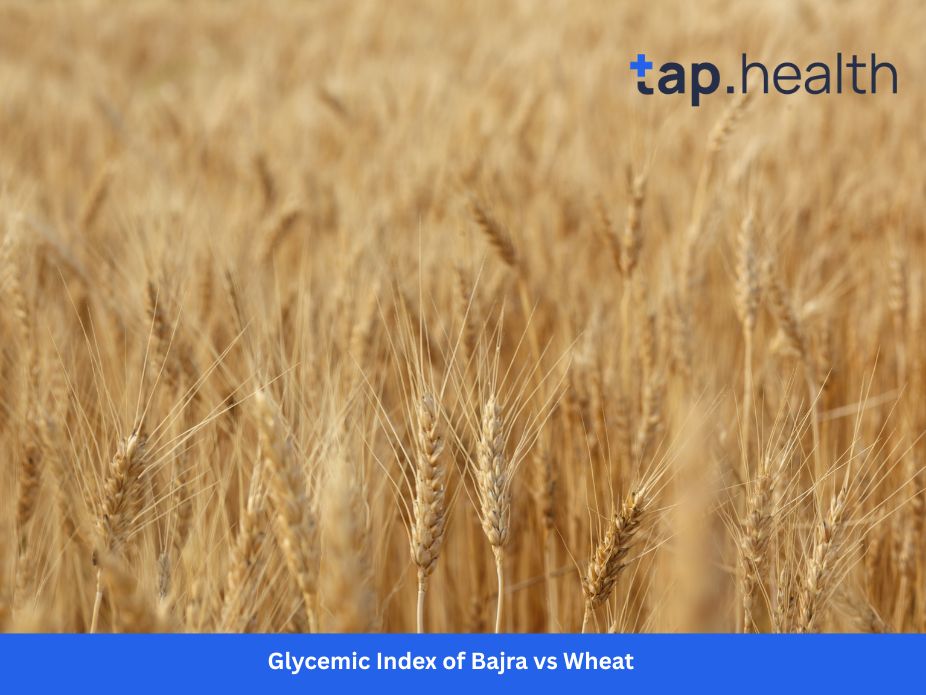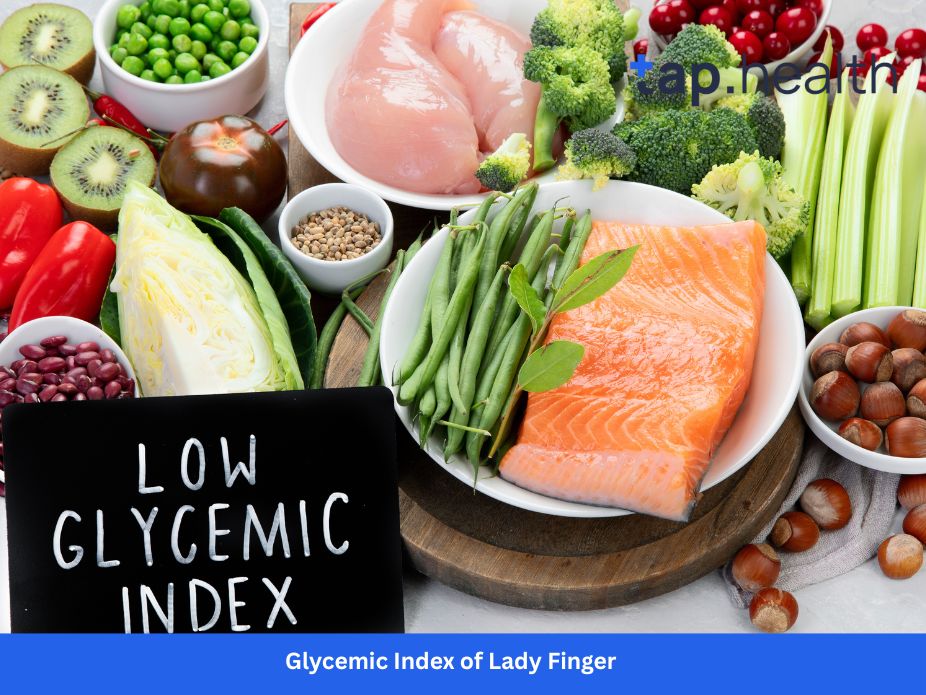Lentils, commonly known as dal, are a staple food in many parts of the world, especially in South Asia. They are rich in protein, fiber, and essential vitamins, making them a nutritious choice for a balanced diet. But if you’re trying to manage your blood sugar levels, you may have heard about the importance of the glycemic index (GI) of foods.
In this blog, we will dive into the glycemic index of dal, explaining what it means, how it affects blood sugar, and why dal can be a healthy choice for people with diabetes or anyone looking to manage their weight and blood sugar levels. Let’s explore the glycemic index of various types of dal and their health benefits.
What is the Glycemic Index (GI)?
Before we focus on dal, it’s important to understand the glycemic index. The GI is a scale that measures how quickly a food causes an increase in blood sugar levels after eating.
- Low GI foods (55 or less) cause a slow, steady rise in blood sugar.
- Medium GI foods (56-69) lead to a moderate increase in blood sugar.
- High GI foods (70 or above) cause a rapid spike in blood sugar levels.
For individuals with diabetes, managing blood sugar levels is crucial. Therefore, consuming foods with a low to moderate GI can help maintain more stable glucose levels.
Glycemic Index of Common Dals
Dal comes in a variety of types, such as toor dal (pigeon peas), moong dal (green gram), masoor dal (red lentils), and chana dal (split chickpeas). Each type of dal has a different glycemic index. Let’s take a closer look at the GI of some common dals.
1. Toor Dal (Pigeon Peas): Medium GI
Toor dal, a popular dal in Indian cuisine, has a glycemic index of around 50-55, placing it in the medium GI category. This means that toor dal causes a moderate increase in blood sugar levels. It’s a great option for those looking for a balanced meal, as it provides protein and fiber while not causing rapid spikes in blood sugar.
2. Moong Dal (Green Gram): Low GI
Moong dal is one of the most commonly consumed dals and has a glycemic index of around 25-30, which is considered low. This makes moong dal an excellent choice for people with diabetes, as it causes a slow rise in blood sugar. It’s also rich in protein and fiber, which helps regulate blood sugar and improve digestion.
3. Masoor Dal (Red Lentils): Medium GI
Masoor dal, or red lentils, has a glycemic index of around 45-50, placing it in the medium GI category. Like toor dal, masoor dal provides fiber and plant-based protein but causes a moderate rise in blood sugar. It’s easy to cook and can be used in a variety of dishes.
4. Chana Dal (Split Chickpeas): Low to Medium GI
Chana dal, made from split chickpeas, has a glycemic index ranging from 35 to 50, depending on how it’s cooked. Generally, it is considered to be in the low to medium GI range. Chana dal is packed with protein, fiber, and minerals, making it a healthy choice for blood sugar management.
5. Urad Dal (Black Gram): Medium GI
Urad dal, commonly used in Indian cooking for dishes like dosa and idli, has a glycemic index of 43-50, placing it in the medium GI range. It’s a good source of protein, fiber, and iron, which are essential for overall health.
6. Lentil Soup: GI Varies by Ingredients
When lentils are cooked into a soup, the glycemic index can change based on the other ingredients used. Adding vegetables, spices, and herbs can lower the GI by adding fiber and slowing down the absorption of sugars. The GI of lentil soup generally falls in the low to medium range, depending on the variety of lentils used.
How the Glycemic Index Affects Blood Sugar
The glycemic index of dal is crucial for diabetics and anyone looking to maintain healthy blood sugar levels. Foods with a low GI like moong dal cause a slow release of glucose into the bloodstream, which helps prevent blood sugar spikes. On the other hand, foods with a high GI cause rapid spikes, which can be harmful in the long term, especially for individuals with type 2 diabetes.
Consuming foods with a medium GI like toor dal and masoor dal still provides a steady supply of energy but with a slightly higher rate of sugar release compared to low-GI foods. This can be beneficial for people looking for moderate energy levels throughout the day.
Health Benefits of Eating Dal
Dal offers a wide range of health benefits, regardless of its glycemic index. Here are some of the top reasons why adding dal to your diet can improve overall health:
1. Rich in Protein
Dal is an excellent source of plant-based protein, making it an essential part of vegetarian and vegan diets. Protein helps in the repair and growth of tissues, and it also plays a role in immune function.
2. High in Fiber
Most types of dal are rich in dietary fiber, which aids in digestion, helps regulate blood sugar levels, and promotes feelings of fullness. Fiber also plays a role in lowering cholesterol levels, which can benefit heart health.
3. Supports Heart Health
The fiber in dal helps lower cholesterol levels, which is beneficial for heart health. Additionally, dal contains potassium, which helps maintain healthy blood pressure levels.
4. Regulates Blood Sugar Levels
The high fiber content in dal helps slow down the absorption of sugars into the bloodstream, which is particularly beneficial for people with diabetes. By consuming dal with a low to medium GI, individuals can prevent rapid fluctuations in blood sugar levels.
5. Good Source of Iron and Other Nutrients
Dal is packed with essential minerals like iron, magnesium, and potassium, all of which are necessary for overall health. Iron, in particular, is essential for the production of red blood cells and the prevention of anemia.
6. Weight Management
Due to its high fiber and protein content, dal helps promote satiety and reduces hunger cravings, which can aid in weight management. It’s also low in fat and can be a great addition to a weight-loss diet.
How to Include Dal in Your Diet
Now that we know the health benefits and glycemic index of dal, let’s look at some easy ways to include dal in your daily meals:
1. Dal Soup
A comforting and easy-to-make option is a simple dal soup. Just cook any type of dal with vegetables like carrots, tomatoes, and spinach, and blend it into a smooth soup. This makes a nutritious and filling meal.
2. Dal Chawal (Dal and Rice)
A classic combination in many households is dal chawal (dal with rice). For a healthier version, you can pair dal with brown rice or quinoa, which have lower glycemic indices than white rice.
3. Dal Paratha
For a filling and nutritious breakfast or lunch, you can make dal paratha by stuffing whole wheat dough with cooked dal and spices, then cooking it on a tawa (griddle). This is a great way to add both fiber and protein to your diet.
4. Dal Salad
For a refreshing and healthy meal, try making a dal salad. Cook your choice of dal, let it cool, and mix it with chopped vegetables like cucumbers, tomatoes, and onions. Add a simple dressing of lemon, olive oil, and herbs.
5. Dal Tadka
Dal tadka is a flavorful dish made by tempering cooked dal with a mixture of ghee or oil, cumin, garlic, and other spices. It’s a simple yet delicious way to enjoy dal with your favorite spices.
Conclusion
Dal is an incredibly nutritious and versatile food that can be included in many different dishes. It’s packed with protein, fiber, and essential vitamins, making it a great choice for people with diabetes, those looking to manage their weight, and anyone who wants to maintain healthy blood sugar levels.
The glycemic index of dal varies by type, with moong dal being the best choice for those aiming for the lowest impact on blood sugar, followed by toor dal and masoor dal. By including dal in your diet, you can enjoy its health benefits while maintaining stable blood sugar levels.
FAQ on Dal Glycemic Index
1. Which dal is best for diabetics?
Moong dal is the best option for diabetics due to its low glycemic index. It causes a slow release of sugar into the bloodstream, helping manage blood sugar levels.
2. Is dal good for weight loss?
Yes, dal is great for weight loss due to its high protein and fiber content, which helps keep you full for longer and reduces hunger cravings.
3. How can I reduce the glycemic index of dal?
You can reduce the glycemic index of dal by pairing it with vegetables and whole grains like brown rice or quinoa. This helps lower the overall glycemic response of the meal.
4. Is it okay to eat dal every day?
Yes, eating dal every day is fine, as long as it is part of a balanced diet. It’s a great source of plant-based protein and fiber, and it can be included in a variety of dishes.
5. Does the glycemic index of dal change with cooking?
Yes, the glycemic index of dal can change depending on how it is cooked. For example, whole dal has a lower GI than split dal, and slow-cooked dal will have a different GI than rapidly boiled dal.
6. Which dal has the highest glycemic index?
Among common dals, masoor dal (red lentils) has the highest glycemic index, although it is still in the medium range compared to other foods.


